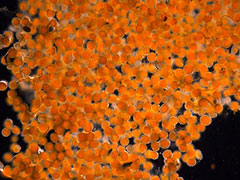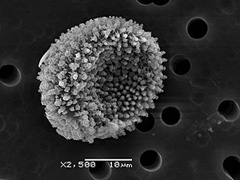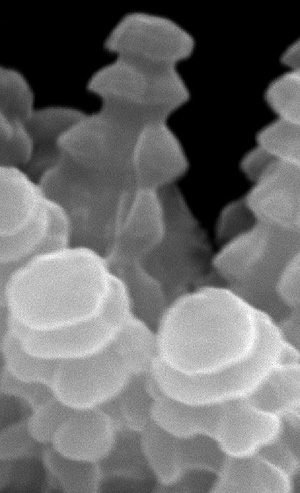
“Orange Goo” in Alaska’s Kivalina village is fungal spores
August 19, 2011
Scientists at the NOAA Alaska Fisheries Science Center’s Auke Bay Laboratories announced last week that the substance was biological in nature, rather than oil or pollution as originally thought by concerned residents of Kivalina. Per standard scientific procedure, samples were sent to NOAA’s Analytical Response Team for a more thorough and detailed analysis and verification process. At NOAA’s National Ocean Service Center for Coastal Environmental Health and Biomolecular Research, based in Charleston, S.C., a team of scientists highly-specialized and equipped to analyze microbiologic phenomena such as this determined that the substance is consistent with spores from a fungi that cause rust, a disease that infects only plants causing a rust-like appearance on leaves and stems. Rust fungi reproduce to infect other plants by releasing spores which disperse often times great distances by wind and water. However, whether this spore belongs to one of the 7,800 known species of rust fungi has not yet been determined. “At this point, the best identification we can give to as the origin of these spores is a rust fungus,” said Steve Morton, Ph.D., with the NOAA Charleston lab. “The spores are unlike others we and our network of specialists have examined; however, many rust fungi of the Arctic tundra have yet to be identified.”
Source of News:
E-mail your news &
photos to editor@sitnews.us
|
|||||


